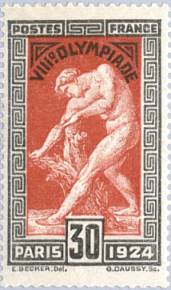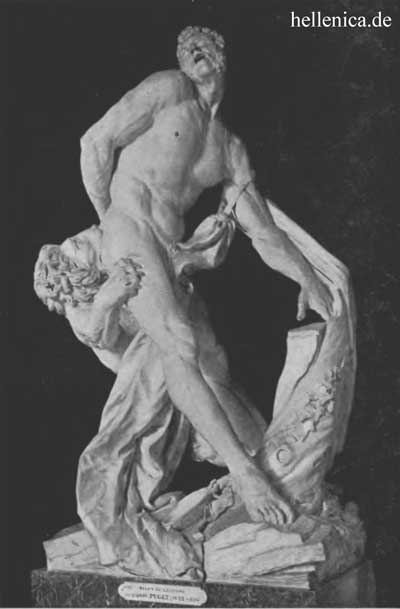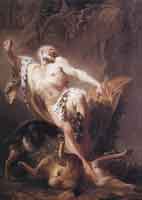.

Milo of Croton (or Crotona)(Μίλων), wrestler, several times Olympic champion for around 26 years. He won the boys wrestling in the 60th Olympiad in 540 BC, five-time wrestling champion from the 62nd to the 66th Olympiad, (532 to 516 BC). He wore a lion-skin cloak and carried a club like Hercules, very impressive athlete as he was eating 8 kg meat each day. Some say that he even once carried to the Olympic stadium a four-year old bull on his shoulders that he slaughter and devour it. Milo was not only a wrestler but also a musician a poet and a student of Pythagoras the mathematician and Philosopher.
The statue of Milo the son of Diotimus was made by Dameas, also a native of Crotona. Milo won six victories for wrestling at Olympia, one of them among the boys; at Pytho he won six among the men and one among the boys. He came to Olympia to wrestle for the seventh time, but did not succeed in mastering Timasitheus, a fellow-citizen who was also a young man, and who refused, moreover, to come to close quarters with him. It is further stated that Milo carried his own statue into the Altis. His feats with the pomegranate and the quoit are also remembered by tradition. He would grasp a pomegranate so firmly that nobody could wrest it from him by force, and yet he did not damage it by pressure. He would stand upon a greased quoit, and make fools of those who charged him and tried to push him from the quoit. He used to perform also the following exhibition feats. He would tie a cord round his forehead as though it were a ribbon or a crown. Holding his breath and filling with blood the veins on his head, he would break the cord by the strength of these veins. It is said that he would let down by his side his right arm from the shoulder to the elbow, and stretch out straight the arm below the elbow, turning the thumb upwards, while the other fingers lay in a row. In this position, then, the little finger was lowest, but nobody could bend it back by pressure. They say that he was killed by wild beasts. The story has it that he came across in the land of Crotona a tree-trunk that was drying up; wedges were inserted to keep the trunk apart. Milo in his pride thrust his hands into the trunk, the wedges slipped, and Milo was held fast by the trunk until the wolves -- a beast that roves in vast packs in the land of Crotona -- made him their prey. Such was the fate that overtook Milo. Pausanias

Milo of Croton, Puget, 1620-1694

Milo of Croton, Joseph-Benoit Suvee
Is this story true? Probably Milo as a member of the Pythagoras school (his wife Myia was a daughter of Pythagoras) was killed by some opponent of this school (maybe one who was rejected as a member) The Pythagoreans assembled at the house of Milo, the wrestler,who was an eminent general, and the most illustrious of the disciples were stoned to death, the house being fired. Porphyry according to Edward Bulwer-Lytton, Athens: Its Rise and Fall
Milo of Crotona devoured by wolves, SUVÉE, Joseph-Benoit , Milon Sculpture , Puget Pierre (1620-1694)
Greeks:
A - B - C - D - E - F - G - H - I - J - K - L - M -
N - O - P - Q - R - S - T - U - V - W - X - Y - Z
| Ancient Greece
Science, Technology , Medicine , Warfare, , Biographies , Life , Cities/Places/Maps , Arts , Literature , Philosophy ,Olympics, Mythology , History , Images Medieval Greece / Byzantine Empire Science, Technology, Arts, , Warfare , Literature, Biographies, Icons, History Modern Greece Cities, Islands, Regions, Fauna/Flora ,Biographies , History , Warfare, Science/Technology, Literature, Music , Arts , Film/Actors , Sport , Fashion --- |
Retrieved from "http://en.wikipedia.org"
All text is available under the terms of the GNU Free Documentation License

